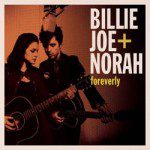Asymmetry, Unpredictability, and Artistry
My tap dance teacher, Dianne, is at the top of my ‘artists I most admire’ list these days. The other day in class, she was experimenting with a riff and couldn’t quite get it the way she wanted. “I wish I could do something asymmetrical here,” she said. “But this isn’t the piece for that.” True – we’re playing a bunch of tap dancing cops that break up a fight between street and classical dancers in a West Side Storyesque piece. Throwing our strict marching and regulated collective movement off with something uneven probably wouldn’t work.
But that statement has had me thinking all week about the notion of asymmetry in art and music. It made me realize why I admire her so much. She always has a very clear vision for her creations, and even though the finer points of them can change, that vision persists throughout their realization. Her comment on asymmetry suggests that she is rarely content with the standard vocabulary that she uses, and constantly tries to find ways to expand that vocabulary.
So how much are we affected by a more flexible approach to music, and how much are we satisfied when a song (or movie, novel, whatever) conforms to a standard and progresses as we predicted it would? Right now I’m reading All the Pretty Horses, and both form and content are in close competition for my heart. Would I appreciate the depiction of the landscape if it wasn’t described in meandering, then abrupt; detailed, then vague phrases? Would I feel such affection for John Grady if his movements and speech were mapped out in more predictable ways?
How does this work in music, or is it something that we don’t really notice until an improvised section or alteration of form jumps out at us? Popular songs are, at their most basic, predictable – based on standard forms, scales, and chord progressions. But how those forms are manipulated is what can make a successful song.
Okay, how about some examples. My first is on the shape of a melody. Does it have even or uneven phrases? That is, do you like this one:
Or these ones? (Listen to the melody only, don’t think about the artists or the singing style or anything else.)
Is the trippy effect of going between different meters more appealing in this song?
Or do we prefer something that’s easier to move to?
How about disparity between voices? There are voices that we might think sound naturally good together because they have similar timbres:
Then there are others that we would never dream of putting together, but somehow it works:
How about slightly unpredictable chord progressions, like when Chris Isaak throws in a major III (going from D to F# major) in “Except the New Girl.” That change is unexpected but sounds so good (sorry for the terrible video).
Do we like it when artists throw off the original performance by using different timing in their phrasing? Willie Nelson does that all the time. So does Ian Tyson:
Or how about when we think it’s going one direction, and there’s a tiny little satisfying surprise, like the way Kathleen Edwards seemingly finishes off the chorus, and then adds that extra line to tease the listener in “Back to Me.”
But then there is something so satisfyingabout Marty Robbins’ “Beyond the Reef” to me. It’s not asymmetrical in any way, and the warm timbre of his voice matches the drawl of the pedal steel so well. There’s beauty in its simplicity, and even though we could say it is entirely predictable, it’s somehow still surprising in its perfection.
Well, I don’t know. But it was fun to think about all week.




